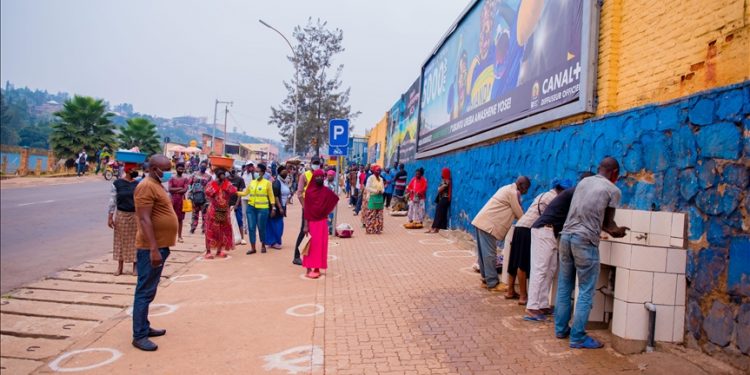KIGALI, Rwanda
Andrew Gatera, a Rwandan tour operator in the capital, Kigali, has serviced his fleet of vehicles that are ready for work after being out of business for months amid strict coronavirus measures.
He sees the pandemic as the most challenging period for his business.
International flight restrictions coupled with lockdowns decimated international tourism in the East Africa region.
The region is normally a hotspot for global tourism because of its rich cultural diversity and varied landscapes attracting millions of visitors from across the world.
“Business was terribly hit; from almost the end of last December most of our tour vehicles were parked,” said Gatera, owner of G- Step Tour, one of the companies offering customized tours in East Africa.
“After the outbreak of coronavirus, business dwindled to about 10% of what we used to work. But it has been gradually picking up with hopes that by next year it may reach around 60%,” he said.
Tourism contribution
Tourism played a critical role in the pre-pandemic economic growth of the East African Community (EAC) partner states, contributing to the gross domestic product by an average of 9.5% in 2019.
It contributed an average of 17.2% to EAC total exports and 7.1% to employment.
Before the virus struck, international tourist arrivals to the East African Community bloc had steadily been growing at varying rates in each partner state, with total annual arrivals of about 6.98 million in 2019, according to data from the East African Community Secretariat in August.
It had been projected that that figure would increase to 14.05 million in 2025.
But the pandemic has not only knocked the industry off that growth projection, but it also rendered 2.2 million people jobless in tourism-related sectors in the region.
It is estimated that tourism arrivals in the region dropped about 67.7% in 2020 compared to 2019.
In absolute terms, the EAC received 2.25 million international tourists in 2020 compared to 6.98 million in 2019.
Also seriously affected was wildlife conservation as this is largely funded by tourism revenue generated through visits to national parks.
It is anticipated that like at most destinations around the world, the 2019 tourism arrival figures will be realized around 2023 and 2024.
Intra-regional and domestic tourism on the cards
Against that background, the region is looking to intra-regional and domestic tourism for revival.
With a population of 177 million, East Africa has a lot to offer in terms of products and attractions, with its enormous untapped tourism and hospitality potential.
Christophe Bazivamo, the EAC Deputy Secretary General Productive and Social Sectors, underlined that with the decline in international travel, it is envisaged that intra-regional tourism will play a major role in jumpstarting tourism activities.
“Therefore, the [regional] recovery plan puts a major thrust in promotion of regional and domestic tourism,” he told Anadolu Agency.
The third wave of the pandemic in the second quarter of 2021 resulted in the imposition of travel restrictions in some of the partner states such as Uganda and Rwanda thus affecting the sector drastically.
But tour operators say if most curbs on movement are lifted with increasing vaccinations, people will be eager to travel within the region.
”On a positive note, we have learned that the domestic market is also as important as the international market,” said Gatera, adding that his company has seen an uptick in tourists and bookings from the region.
What industry analysts say
Carmen Nibigira, a Kigali-based tourism analyst, said with a tourism recovery not envisaged in the near term, domestic and regional tourism markets are the best route possible to recovery.
She, however, noted that while some governments have made available recovery funds and waived some taxes — “cross-border political issues are still haunting business in the region,” she said.
“With airfares still rocket high and stringent COVID restrictions in some countries, there is still more the governments can do to make the recovery much smoother,” she said. “Governments should put aside their political differences and make travel within the region easier, and the private sector players need to create the right packages,” added Nibigira.
Recovery plan
Amid the uncertain outlook, the region has taken steps to help the battered industry.
A Regional Tourism Recovery Plan has been unveiled, where six partner states of the bloc — Kenya, Uganda, Rwanda, Tanzania, Burundi and South Sudan — adopt a collective and coordinated approach toward tourism recovery.
They have undertaken to develop a collective and coordinated approach to the promotion and marketing of quality tourism into and within the community.
According to Bazivamo, the plan also focuses on undertaking capacity building of tourism service providers such as tour operators, travel agents and hoteliers on aspects such as digital marketing, development of multi-destination tourism packages that would allow tourists to transverse more than one EAC country in a single itinerary, crisis management and COVID-19 safety guidelines.
Roughly $57.8 million is needed to implement the sector’s recovery plan.






